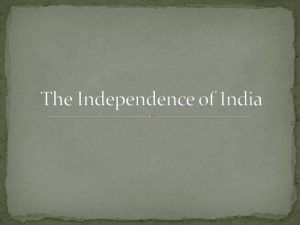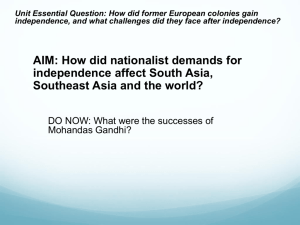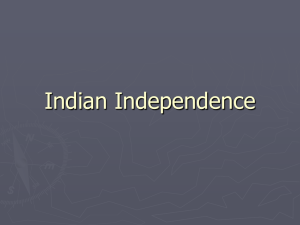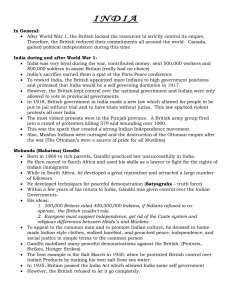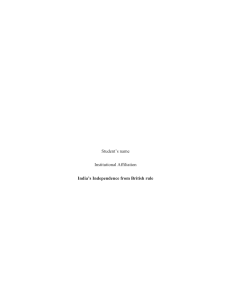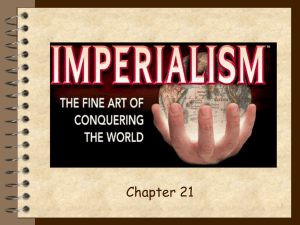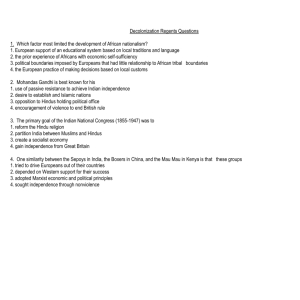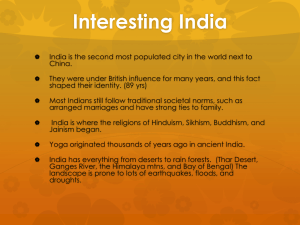Slide 1
advertisement
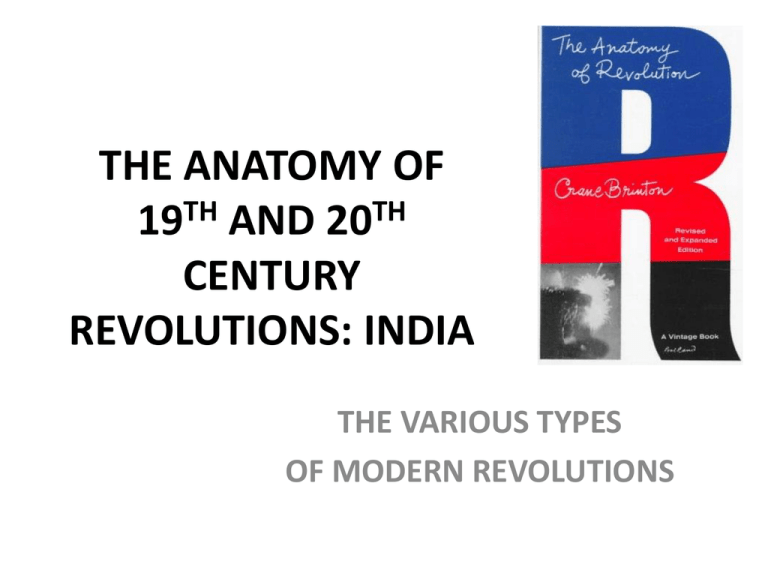
THE ANATOMY OF TH TH 19 AND 20 CENTURY REVOLUTIONS: INDIA THE VARIOUS TYPES OF MODERN REVOLUTIONS INDIA: BRITAIN LOSES CONTROL • Lord Ripon and Ilbert Bill – Sought local self-government – Opposed by Anglo-Indians – Indian nationalist sentiment arose • Founding of Indian National Congress – Seeks expansion/reform of councils – Seeks Indianization of civil service – Nature becomes more aggressive • Industrialization of India changes society • Impact of World War I on India • Hundreds of thousands of Indians fight in Britain’s armies in WWI. BRITISH SEEK TO MAINTAIN THE STATUS QUO • • • • Indians begin to organize Indians begin to demonstrate British pressure Indians to conform World War I: Pressures for Home Rule – Anti-sedition acts – Gandhi begins his fasts, satvagraha movement • • 1920 Armitsar Massacre- British troops massacre protesting civilians, causing even more anti-British sentiment. Muslim, Hindu goals diverge COOLER HEADS SEEK TO COMPROMISE • 1920 Government of India Act creates: – – – – • Council of State; Legislative Assembly Provincial Governments Some Indians allowed to participate, vote Swaraj party advocates cooperation Gandhi’s non-cooperation movement – Won’t collaborate with the occupier. – Non-violent – Seek independence not class conflict COMPLETE INDEPENDENCE BECOMES GOAL • • • • • • • Great Depression hurt India Gandhi’s Salt March begins civil disobedience Raids on armory, provinces in revolt Indians oppose 1935 Government of India Act Muslims and Hindus split over goals Independent minded Indians gain power Colonial powers in World War II – – – British power defeated by Japanese in Asia Japanese invade Burma, India British promise reforms at end of war in exchange for Indian help! INDEPENDENCE COMES • During World War II – – – • 1945 – • Muslims, Hindus disagree 1946 – • Americans pressure British for independence Indian Army saves Britain in many battles UN agreements give India a vote Muslim Indians insists on Muslim state 1947 – British announce plans to partition: Agree to create two countries out of India: India and Pakistan INDIAN REIGN OF TERROR • Terror, Riots precede, follow Partition – – – – • Exchange of Populations – – • Communal violence explodes Hindus, Muslims massacre each other Pakistan, India fight over Kashmir Gandhi assassinated by nationalist Many Muslims moved to Pakistan Hindus moved to India Principalities abolished MODERATES PREDOMINATE • • • 1947 - 1950 – – India joins non-aligned movement India, Pakistan remain in Commonwealth Indian establish democracy – – – – Suppress secessionist movements Congress party defeats radical parties Universal franchise in India; end caste Constitution uses many old 1935 laws Pakistan tends towards tradition – – – Establishes Islam as model, laws Suppresses ethnic, regional differences Leaves power in landlords’ hands INSTITUTIONS, LEADERS STABILIZE REVOLUTION • India – – – – – • Secular state was vision Federal structure of states, politics Business leaders critically important Nehru and later I. Gandhi guided state Strong opposition parties allowed to run Pakistan – – – – Traditional social elements in control No significant redistribution of resources Military influences government Centralized planning limited
